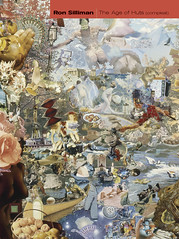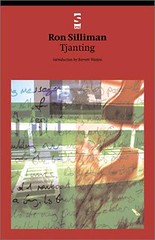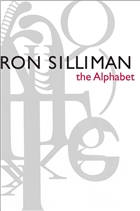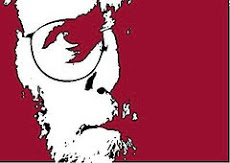Some
bloggers can be more than a little cryptic. Michael Helsem, possibly better known as graywyvern or xvarenah, (tho
under his own name he has an interesting little site on tanka
that starts off with a quotation from Rae Armantrout) mentions The
Saragossa Manuscript in a recent entry. But that’s all he does,
save for a link first to a review in the Brightlights Film
Journal, then a second link
to a class on the film from a Slavic Studies course at
That
reminds me of a story. In fact, everything in Rekopis znaleziony w Saragossie
reminds somebody of a story, which they’re only too happy to tell. The Brightlights review has a subhead that characterizes
the film as a “legendary head flick from the ‘60s,” one of those grossly unfair
shorthand gestures that isn’t entirely wrong. Made in 1965 in Poland by the
director Wojciech Has & starring Zbigniew Cybulski, the Polish
equivalent of James Dean, not as the moody star he was in Ashes & Diamonds, but instead as a comic
bungler, the film adapts what I’ve heard characterized as “the Polish national
epic.” The novel, written by Jan Potocki at roughly
the same moment in history when Wordsworth was penning The Prelude, was, however, written originally in French & its
action takes place entirely in
Set
during the Inquisition, the story begins when two soldiers put down their
swords in the middle of a duel to examine a giant book in the room they happen
to fighting in. One recognizes that it accounts the tale of one of his
ancestors, Alfonse Von Worden, a captain in the Guards who was ordered to
report to duty in Madrid, but had to pass through Sierra Morena, a
mountainous regional along the Portuguese border rumored to have gypsies, kabbalists, Moors, bandits & other sorts whom a young
officer in the Guards would be well advised to avoid. Needless to say, Von
Worden has adventures that involve all of the above,
but most importantly, virtually everyone he meets – my favorite is the
possessed sheepherder Pacheco – first has to tell their story. Often, somebody
within their story must tell their own as well. And somebody within that tale
must tell theirs. And and and. At one point, I think that viewers of this film must
be nine layers down into the tales – and one never does get back to the
original duelists. Magic, heresy & incest are all suggested, along with
some stereotypes of people – especially Muslims – that are wild even by today’s
post-911 xenophobia. All of this filmed in a shadowy black & white with a
haunting – well-chosen adjective – electronic score by Krzysztof Penderecki,
largely unknown in the west at the time.
The
film is pure narrative, but a narrative devoted to its devices & adamantly
not going anywhere It’s the closest thing cinematically to the experience of a
Thomas Pynchon novel – all it needs is a talking electronic duck. Back in the
1960s & early ‘70s, it was regular fare at the Cedar Alley Cinema in
The
cinema, which was tiny & funky, with the requisite uncomfortable chairs
that made sitting through a two-hour movie an ordeal, was also immediately next
door to a fire house. At randomly spaced moments – always the worst possible
ones – the entire theater would be filled for a few minutes with bells &
sirens, then curiously quiet again even if mayhem was taking place onscreen.
I
must have seen The Saragossa Manuscript ten
times during those years. If, in fact, cinema is where narrative has fled from
the printed page, this film that strives for what Viktor Shlovsky
would call “plotless prose” – because it is all
plot – is some kind of apotheosis. If Stan Brakhage & Michael Snow showed
what cinema could be sans all those
devices, Has’ film reverses the lesson. I never tired of watching its leisurely
excursions into the absurd, especially when subplots would come together – just
often enough to taunt the audience with possibilities of closure.
Indeed,
Saragossa Manuscript is one of only two
motion pictures that I have ever bought for myself on DVD*. I did this almost
instinctively the instant I found it – I hadn’t seen the film in almost 30
years & had feared that it was lost. Fortunately for me, the film had other
serious fans, one of whom, Jerry Garcia, arranged with the Pacific Film
Archives in
The
film stands up some 30 years later – in fact, I think I got much more out of it
watching The Saragossa Manuscript now
than I did when I was a kid, since I have a much better grasp not only about
its historic period, but also with what it’s trying to do as a film. Back in the
1960s, I would simply go to a film such as, say, The Red Desert, to watch the ship pass
slowly behind the window of the little shed on the pier & to see the room
turn subtly to pink after Richard Harris & Monica Vitti
have their tryst, but with no real sense of why or how those details were
important – let alone why they moved me so, especially the boat** – whereas now
I can see them in a far richer context.
So
it made my heart skip to see Michael Helsem link to
this wonderful, but almost secret motion picture. But, Michael, say a little
more.
*
The other is the documentary
**
I swear that that ship may be responsible for my writing longer poems. It made
me realize, as did the Edith Piaf record in Jean Eustache’s The
Mother and the Whore, that the single
most important aesthetic effect was the ability to slow down time. I have spent
my entire life attempting to arrive at such moments with words.





